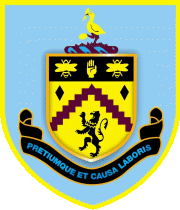
BURNLEY F.C.
Founded: 1882
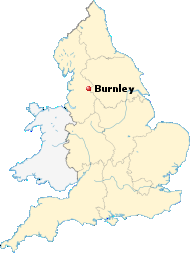
CLICK ON THE MAP TO
VIEW ENLARGED MAP
|
BURNLEY F.C. (Football Club)
Included Info: Brief History, Club/Stadium Info, Team Jersey & Much More...
BRIEF HISTORY of BURNLEY FOOTBALL CLUB
(reproduced from 'Wikipedia' pages)
During May 1882, Burnley Rovers Football Club decided to shift their allegiance from rugby union to
football. Playing in various blue and white kits for their first few years, the club played their first
competitive game in October 1882 against Astley Bridge in the Lancashire Challenge Cup, that game ending
in an 8–0 defeat. In 1883 the club moved to Turf Moor and remain there, only their Lancashire rivals
Preston North End having occupied the same ground continuously for longer. Burnley first appeared in the
FA Cup in 1885–86 but were ignominiously beaten 11–0 when eligibility restrictions meant that their
reserve side had to be fielded against Darwen. When it was decided to found the Football League for the
1888–89 season, Burnley were among the 12 founders of that competition. Burnley, now known as 'the Turfites',
'Moorites' or 'Royalites' finished 9th in the first season of the league. Before Burnley won a trophy again,
they were relegated to the Second Division in 1896–97. Before Burnley won a trophy again, they were relegated
to the Second Division in 1896–97. They responded to this by winning promotion the next season, losing only
2 of their 30 matches along the way before gaining promotion through a play-off series then known as 'Test
Matches. Burnley were relegated again in 1899–1900 and found themselves at the centre of a controversy when
their goalkeeper, Jack Hillman attempted to bribe their opponents in the last match of the season (Nottingham
Forest), resulting in his suspension for the whole of the following season. During the first decade of the
20th century, Burnley continued to play in the Second Division, even finishing in bottom place in one season,
although the indications of success just around the corner were evident in 1911–12 when only a loss in the last
game of the season denied the club promotion.
Burnley changed their colours from green to the claret and sky blue of Aston Villa, the most successful club in
England at the time, for the 1910–11 season. The 1912–13 season saw them win promotion to the First Division once
more, as well as reaching the FA Cup semi-final, only to lose to Sunderland. The next season was one of consolidation
in the top flight, but more importantly their first major honour, the FA Cup, won 1–0 in the last final played at
Crystal Palace against Liverpool. World War I impacted the 1914–15 season, in which Burnley finished 4th in the
First Division, before English football reorganised itself and took a back seat to the needs of the conflict.
Upon resumption of full-time football in 1919–20, Burnley finished second in the First Division to West Bromwich
Albion but this was not a peak, merely presaging Burnley's first ever League Championship in 1920–21. Burnley
struggled in English football's second tier, narrowly avoiding a further relegation in 1931–32 by only two points.
The years through to the outbreak of the Second World War were characterised by uninspiring league finishes, broken
only by an FA Cup semi-final appearance in 1934–35. Burnley participated in the varying football leagues that continued
throughout the war, but it wasn't until the 1946–47 season that league football proper was restored.
In the first season of post-war league football, Burnley gained promotion through second place in the Second Division.
Burnley immediately made an impact the top division, finishing third in 1947–48 as the club began to assemble a team
capable of regularly aiming for honours. 1956–57 saw a club record 9–0 victory over New Brighton in the FA Cup. The team
of the 1950s revolved around the midfield duo of Jimmy Adamson and Jimmy McIlroy (a new stand was named after the latter
in the 1990s) and these two were key to the championship-winning team of 1959–1960 managed by Potts. After a tense
season in which Tottenham Hotspur and Wolverhampton Wanderers were the other protagonists in the chase for the league
title, Burnley clinched the championship at Maine Road, Manchester with a 2–1 victory on 2 May 1960. Burnley had never
led the table until this last match was played out. The following season Burnley played in European competition for the
first time beating Reims and losing to Hamburger SV, lost in an FA Cup semi-final and finished fourth in the league
and the highlights of the 1961–62 season were finishing second in the league and a run to the FA Cup Final, where a
Jimmy Robson goal was Burnley's only reply to 3 goals from Spurs. The remainder of the decade was otherwise one of
mid-table mediocrity. Burnley won the Second Division title in 1972–73. Three non-descript seasons in the Second Division
followed before relegation to the Third Division for the first time in 1979–80.
In May 1988, Burnley were back at Wembley; this time to play Wolves in the final of the Football League Trophy. A capacity
crowd of 80,000 people packed Wembley was a record for a match between two teams from English football's fourth tier, as
Wolves won 2–0. In 1991–92, Burnley were champions in the last ever season of the Fourth Division before the league
reorganisation, and two years later they won the new Division Two play-offs and gained promotion to Division One under
Jimmy Mullen. That too was as a result of a match at Wembley, this time against Stockport County. Relegation followed
after one season and in 1997–98 only a last day 2–1 victory over Plymouth Argyle ensured a narrow escape from relegation
into Division Three. Chris Waddle was manager in that season, but his departure and the appointment of Stan Ternent that
summer saw the club start to make further progress. In 1999–2000 they finished Division Two runners-up and gained
promotion to Division One.
|
CLUB FACTS & INFORMATION
| Official Name
| --
| Burnley F.C. |
| Club Nickname
| --
| The Clarets |
| Year Founded
| --
| 1882 (135 years ago) |
| English County
| --
| Lancashire |
| Current Ground
| --
| Turf Moor |
| Ground Location
| --
| Burnley, England |
| Club's Owner
| --
| Burnley FC Holdings |
| Joint Chairmen
| --
| John Banaszkiewicz, Mike Garlick |
| Current Manager
| --
| Sean Dyche |
| Current League
| --
| Premier League |
| Last Season
| --
| Premier League, 16th place |
HOME COLORS

Claret & Sky Blue |
AWAY COLORS

Yellow & Claret |
|
| |
INTERESTING STADIUM FACTS & INFORMATION

TURF MOOR
Harry Potts Way, Burnley,
Lancashire, BB10-4BX, England
OPENED: ......... February 17, 1883
SURFACE: ........ Grass interwoven with astro-turf
COST: .............. not available
CAPACITY: ...... 21,800
RECORD: ......... 54,775 (1924 vs Huddersfield Town)
OWNER: ........... Burnley F.C.
OPERATOR: ..... Burnley F.C.
FIELD SIZE: ..... 114 x 72 yards (104 x 66 meters)
|
|
|
HOME JERSEY
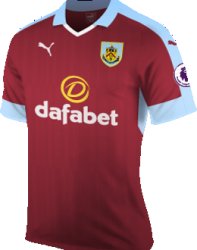 |
AWAY JERSEY
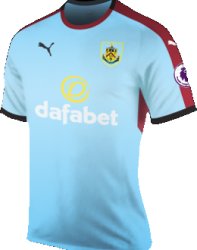 |
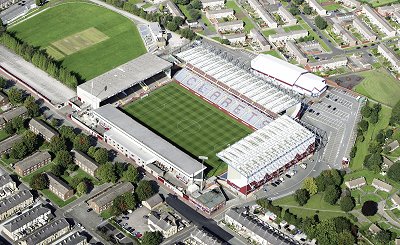
Click On Aerial Photo To View/Download Enlarged Image
|
Turf Moor (Burnley) Seating Diagram
Click On Diagram Below To Enlarge View
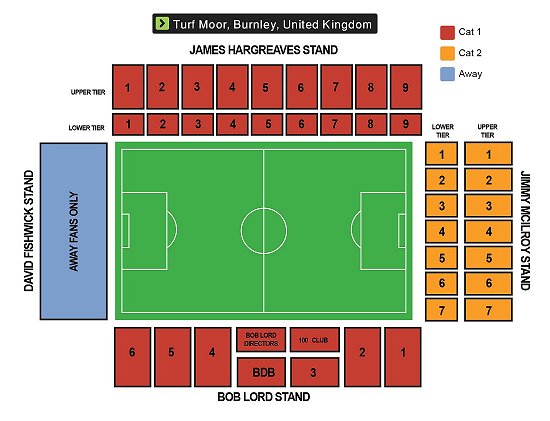
|



BURNLEY STADIUM WALLPAPERS (Free Download)
Wallpaper Size below is 800x600: To Download Bigger Sizes, Click On Any Button Shown Above

|
|

